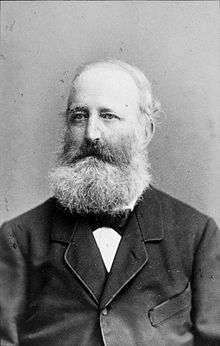Franz Ritter von Hauer

Franz Ritter von Hauer, or Franz von Hauer (January 30, 1822 – March 20, 1899), was an Austrian geologist.
Biography
Hauer was born in Vienna, the son of Joseph von Hauer (1778-1863), who was equally distinguished as a high Austrian official and authority on finance and as a palaeontologist.
He was educated in Vienna, afterwards studied geology at the mining academy of Schemnitz (1839-1843), and for a time was engaged in official mining work in Styria. In 1846 he became assistant to Wilhelm von Haidinger at the mineralogical museum in Vienna; three years later he joined the imperial geological institute, and in 1866 he was appointed director. In 1886, he became superintendent of the Imperial Natural History Museum in Vienna.
Among his special geological works are those on the Cephalopoda of the Triassic and Jurassic formations of Alpine regions (1855-1856). His most important general work was that of the Geological Map of Austro-Hungary, in twelve sheets (1867-1871; 4th ed. 1884, including Bosnia and Montenegro). This map was accompanied by a series of explanatory pamphlets.
In 1882 he was awarded the Wollaston medal by the Geological Society of London. In 1892 von Hauer became a life-member of the upper house (Herrenhaus) of the Austrian parliament.
Notes
Regarding personal names: Ritter is a title, translated approximately as Sir (denoting a Knight), not a first or middle name. There is no equivalent female form.
Publications
- Beiträge die Paläontolographie von Österreich (1858-1859)
- Die Geologie und ihre Anwendung auf die Kenntnis der Bodenbeschaffenheit der Österr.-Ungar. Monarchie (1875; ed. 2, 1878).
References
-
 This article incorporates text from a publication now in the public domain: Chisholm, Hugh, ed. (1911). "Hauer, Franz, Ritter von". Encyclopædia Britannica (11th ed.). Cambridge University Press. This work in turn cites:
This article incorporates text from a publication now in the public domain: Chisholm, Hugh, ed. (1911). "Hauer, Franz, Ritter von". Encyclopædia Britannica (11th ed.). Cambridge University Press. This work in turn cites:
- Memoir by Dr. F. Tietze
- Jahrbuch der K. K. geolog. Reichsanstalt (1899, reprinted 1900, with portrait)